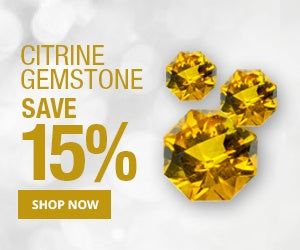The Fascinating History of Peridot - The August Birthstone
Peridot has been the official August Birthstone since 1912 but its history goes back much further than that! The name comes from the French word ``peritot`` - which means gold - likely because the stone can vary toward the colour gold. Peridot is also given to celebrate a 16th Wedding Anniversary.
For any Leo in your group of friends and family (or, for that matter, anyone who likes Peridot), this collection of Peridot history, myth and lore would be a great accompaniment to the gift of this beautiful semi-precious gemstone.
The Ancient Egyptians considered Peridot to be a very spiritual gemstone. Believe it or not, Egyptians priests would brew a strong beverage from crushed Peridot gemstones to consume during ritual ceremonies. They thought it brought them closer to nature!
Ancient Hawaiian folklore believes Peridot to be the hardened tears of the goddess Pele. Pele was associated with fire, lightning and volcanoes. Quite the powerful goddess! Pele was also known to be benevolent and generous and Peridot is one of the gifts she gave to her people.


Peridot is very similar to Emerald but the stone is less intensive - softer. Many legends speak of the magical power of Peridot. For example, it is believed that Peridot set in gold develops strong talismanic power to dispel night terrors, bad dreams and nightmares. Peridot has long been thought to be an aid to making friends. It supposedly frees the mind of envious thoughts and is also thought to be a defense against the ``evil eye``. Other legends say Peridot creates happiness and attracts lovers! In ancient times, cups and other drinking vessels were sometimes made with Peridot to be used in healing. It was thought that medicines drunk from these vessels were more effective. Some people believed that powdered Peridot could cure respiratory issues and help with heart problems. In the Middle Ages, Peridot was placed under the tongue of sick individuals. It was thought to help reduce fevers. It is thought that Peridot brings good luck, peace and success to those who wear it.

We hope you've enjoyed all the fascinating things we discovered about Peridot Gemstones.













 Unlike many other gemstones, the citrine can be found in larger shapes and sizes, a result of modern stone cutting technology. Therefore, you are not limited to a small selection of sizes and cuts. You will be able to find the perfect citrine stone, whether it’s for a ring, necklace, earrings or bracelet.
Unlike many other gemstones, the citrine can be found in larger shapes and sizes, a result of modern stone cutting technology. Therefore, you are not limited to a small selection of sizes and cuts. You will be able to find the perfect citrine stone, whether it’s for a ring, necklace, earrings or bracelet.




